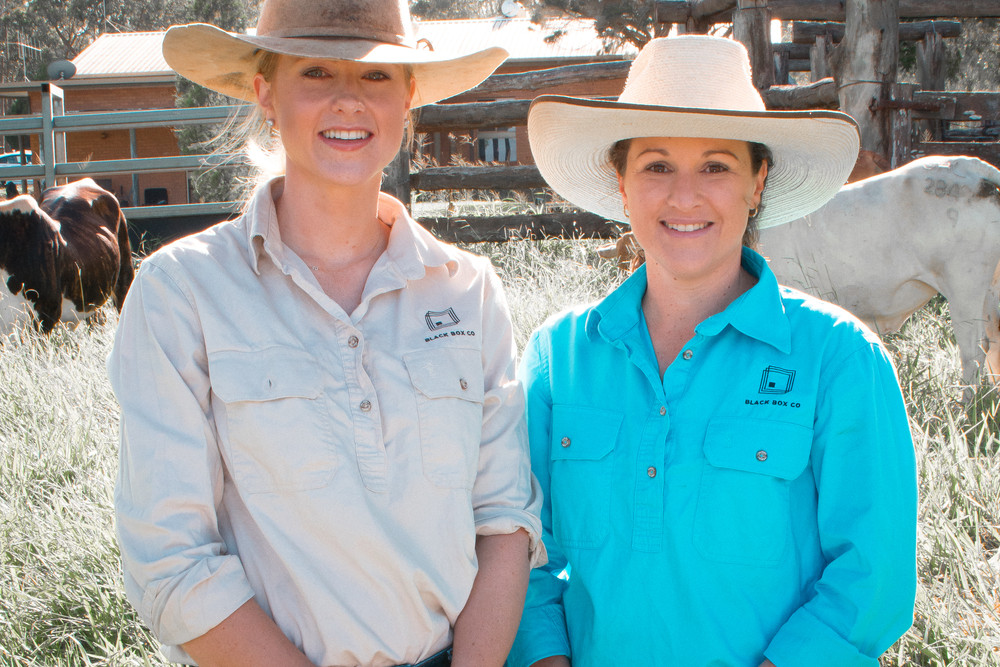On The Land
16 July, 2022
Black Box Co releases new cattle industry product
A NEW herd-recording program developed for the beef industry is in its trial phase pending release into the market in the next couple of weeks.

“Herd Inventory” features an innovate category for absent cattle, deeming them “missing” after 18 months and “dead” after two years, reducing the potential for “skewed averages” in calving and weight gain figures in large-scale operations.
The extension of the innovative SaaS (Software as a Service) product Black Box Co designed a couple of years ago, acknowledges the “many moving parts of the cattle industry” and could be the product many producers have been searching for.
Knowledge is power, and this young, rural, Tableland-based company has been helping cattle producers gather information and empowering them with the tools to use that information to increase productivity in their businesses for the last couple of years.
The company's co-founders, chief executive officer, Shannon Speight, and chief operations officer, Emma Black have developed a web-based app that seamlessly ingests, standardises, validates and analyses animal performance data across the supply chain.
It has taken veterinarian, Shannon and her team just over two years to develop their product which now boasts a team of 10 people around Australia collecting information from 30 million data points, representing 100 producers and 1.97 million head of cattle.
Shannon was the joint winner of the prestigious Zanda Mc-Donald award in 2019 for her work as coordinator of the University of Queensland's Northern Genomics Project, focusing on improving genetic selection and reproductive technology.
Ovarian scanning 30,000 heifers across 54 Queensland, Northern Territory and Western Australian cattle properties, Shannon worked with beef producers, beef extension officers from state governments, consultants and vets, university researchers and scientists.
When she wasn't on the road or in the yards, she was processing data, analysing it for reports and staying in touch with producers to fulfill the project goal of developing a DNA fertility test suitable for northern Australian cattle.
During this project and her earlier property work experience, Shannon said she continually noticed station workers gathering herd information during musters and failing to do anything constructive with that information afterwards.
Inaugural winner of the Zander McDonald award in 2015 and judge in the 2019 competition, Emma has witnessed similar conditions working with producers in livestock nutrition and during her involvement in her abattoir management graduate program.
“Emma and my background were complementary and we knew data was being served up to producers in an unpalatable way,” Shannon said.
“A lot of people weren't even looking at carcase feedback sheets.
We said, ‘someone has to solve this problem’, so we started working with our program developers who knew nothing about cattle, but a lot about technology.
“Our timing was good, as the cloud and other technical advances made our job easier.
“People were collecting more data, and it had become more affordable to build a solution, so that's what we did, one step at a time, consulting with graziers all through the process.”
Born in Mt Isa and now living on their 162-ha Ravenshoe farm with her husband, Luke, and their two sons, Fred and Russell, the daughter of nomadic mining parents, Shannon never imagined herself living on a farm and working with graziers across Australia.
Always an animal lover, she was halfway through her Bachelor of Veterinary Science degree at the university of Sydney when indifference for her course motivated her to take a job ringing for two years on Delamere Station in the Northern Territory.
After a “tough as hell” start, Shannon developed a lot of new skills, and a deep love for the industry and its people which gave her degree a new focus.
It was out with the “itchy poodles” of city practice and in with big animals, bovine preg testing and ovarian scanning.
After a stint with Tableland Veterinary Service at Malanda and then export preg testing at Charters Towers, Shannon started her genomic fertility project which showed her a good cross-section of company, stud, and family breeding operations across a wide variety of systems.
“Many producers NLIS tag cattle at point of sale, but the benefits of tagging weaners can outweigh the activity's nuisance value.
That tag is like a little USB stick in every calf's ear and can establish an early weight that gives growth information from that point in time,” Shannon said.
“Using a producer's kill sheet data from their abattoir records, NLIS records and basic information from their property scales – we can build individual animal profiles to assist in decisions about which animals should be culled, kept or moved to another property.
“We believe in listening first and love solving really hard problems. Our team, who are all farmers and producers themselves, travel out to set up programs and crush-side templates.
Tying weights to carcase data can reveal some remarkable insights about property and breeder performance.
“Bank managers assume a 50 per cent preg test result when loaning money to northern Australian producers.
Proving you are achieving better results increases their leveraging power to offer you more money at a better rate.
“Black Box is a two-way system, once we have your information, we can push information back into your crush side machine activating alerts to be executed, drafting cattle into live export or feedlot mobs at specific times of the year.”


